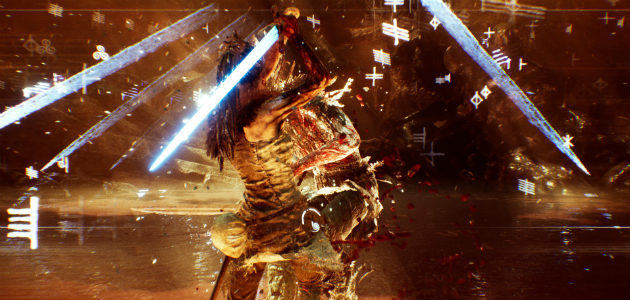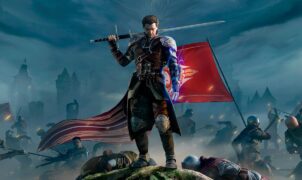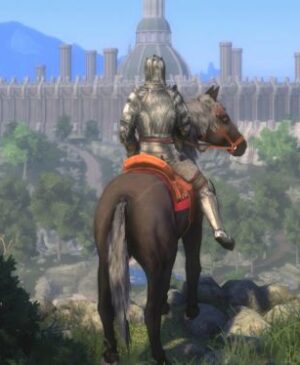REVIEW – Ninja Theory has jumped … without a safety net. The creators of Heavenly Sword or Enslaved move to more independent development with a video game in which they play everything. In this analysis of Hellblade: Senua’s Sacrifice I tell you if this trip of his troubled protagonist deserves your attention, but I’m going ahead that is something unique and of tremendous beauty. Two faculties that do not abound. It’s indeed a spectacular narrative exercise, crude but fascinating, that uses all its elements to put us in the skin of its protagonist.
At the moment I start writing these lines, I’ve been doing this analysis for a couple of days, fighting against the impulse that makes me want to turn it into a purely personal text. It is a strange feeling because I am aware that no reader would be satisfied if I came here to find out if the title we are dealing with is worthwhile and ran into a critic who spoke more about me than about the game. And yet, I find it very complicated to explain my opinion of Hellblade: Senua’s Sacrifice, not to mention my feelings, the way I have lived it, and without telling how my own experiences have made me more transcendent than any another work that has been published during this year.
Two stories in parallel
Let’s put it this way: Hellblade has two stories that happen in parallel. The first, the one spoken of in the trailers, the synopsis, and the promotional images, is that of Senua, a Celtic warrior who enters Viking territory in search of the entrance to Helheim: the “kingdom of death” in Norse mythology. In this hell, ruled by the goddess Hela, Senua aspires to recover the soul and life of Dillion, his beloved deceased. The second story, however, is that of the player. Our protagonist, the character we handled throughout history, suffers from severe episodes of psychosis.
In the documentary that comes as an addition to the game and to which we can access through the main menu, the creators explain that the premise was to create a journey of the classic hero, but that put special emphasis on presenting the universe as it is perceived by the mind of the protagonist, establishing her mental illness as the nucleus of the work. The video game, therefore, will use all its elements to create an atmosphere that is capable of transmitting to the player the way in which affected by the psychotic disorder live and feel when they coexist with the disease.
A difficult subject
It is a difficult subject to address. There are some stigmas associated with people with mental disorders, especially those with symptoms related to psychosis. It is a taboo subject, represented in fiction in a scarce and uninformed way; And, on the other hand, a complicated illness to understand for those who do not suffer it, because its symptoms are so varied and difficult to measure.
To achieve a respectful and true representation, the Ninja Theory team has worked with a multitude of mental health professionals and patients of the disease above. Senua listens to voices, and we will hear them as well: voices that make us doubt our abilities, which incite us to go to danger, give us wrong advice or make us feel bad about ourselves. The great work of the voice actors and the use of the binaural sound system are one of the key elements that the game uses when it comes to creating the atmosphere.
You are under her skin
In one of the most remarkable moments of the game, Senua is in a cave in which there is absolutely no source of light. Almost desperate, she feels a little wind in her face, and that tells her that there is some way out, and what direction she has to move. To us, the command vibrates when we approach the breeze, and that tells us where to walk. Our sense of touch and that of the protagonist are one at that moment, and what we feel guides us in the darkness towards our destiny. The design of the whole game is similar to the one of this scene that I describe, it is governed by the same principle: its main objective is to try, by all means, that we put ourselves in the skin of the personage.
There will be a multitude of puzzles and situations in which we will have to use the touch, the sound or the particular perception of the reality of the protagonist to get ahead. And practically all the mechanics of the game, the atmosphere, the narrative and the sound are carefully planned to represent the different ways in which the disorder can manifest itself, making the player experience something similar to what they feel.
A sober environment
I know I’ve said before that I did not want to get personal in this text, but I’m going to allow myself a little anecdote, and I started to play Hellblade just after finishing Tacoma. As explained in the previous analysis, Tacoma’s scenarios are made up of a multitude of details, and the game portrays the characters through them: snatching in their room we can extrapolate their tastes and their concerns. Perhaps precisely because I came from playing that, the scenes of Hellblade caught my attention: their maps are sober, Spartan, and hardly worth stopping to look at closely.
We will not find in them collectibles, or narrative elements that help us give context or understand facets of history. What is perhaps disappointing in other titles, has in this whole sense of the world: the terrain is an accessory element because the real struggle of our protagonist is happening elsewhere. The mind of Senua is its worst enemy, and will be in this title our battlefield.
Fight for your life!
It is in combat where the game truly shines. At the beginning of the game, we are told that for reasons related to the plot Senua’s arm has a rot that will spread throughout his body every time we fail. This “curse” clearly represents your psychotic disorder, and every time we die and we have to reload the game, the mark will become a little bigger. In one of the few situations in which the game uses elements beyond history to convey information, warns us that if the rot comes to his head, Senua will die and we will lose all progress. We are not, however, specified how many times we can die before this happens; And, incidentally, Senua does not even have a life meter that tells us how many strokes we can receive before we perish.
In this way, we feel each and every one of the fights as if they were important. Even the simplest enemies will be alert to us because any false step can have consequences. Our cost of opportunity is high in every battle that is fought: if we are wrong, Senua will lose his life and fail in his purpose, and we will lose our progress and effort. Perhaps I am reading more here, but having to work to the maximum even with enemies that in other titles we would overcome distracted, without effort, establish a correct parallelism between how certain situations experience the people with psychological pathologies, who to face seemingly simple situations can cost them an extra effort.
Keep fighting
Because of his work environment, for his more than interesting look at the Norse mythology, to possess one of the most interesting female characters in the middle, and to manage to fight against stigma and prejudice by putting us in a situation that we might not otherwise understand, Hellblade: Senua’s Sacrifice is one of the most important video games I’ve ever had the fortune to experience, and I want to think that many future titles will take lessons from him to tell his stories. But I have to confess that it is not at all a simple game to play. I am not referring to his curve of difficulty, which is more than adequate, but to his emotional weight: the universe of Senua, his suffering and his struggle hide many horrors. And yet, let us glimpse a small optimistic message: even in the hardest moments, we can keep fighting. We can keep walking forward.
-BadSector-
Pro:
+ Fantastic ambiance
+ Outstanding graphics and sounds
+ Memorable, mystique story
Against:
– Puzzles are tiresome
– Extremely linear
– Save system can feel weird for some
Publisher: Ninja Theory
Developer: Ninja Theory
Genre: Hack’n’slash, adventure
Release date: Aug 8, 2017
Hellblade: Senua's Sacrifice
Gameplay - 7.1
Graphics - 9.2
Story - 8.2
Music/Audio - 9.8
Ambiance - 8.5
8.6
EXCELLENT
Because of his work environment, for his more than interesting look at the Norse mythology, to possess one of the most interesting female characters in the middle, and to manage to fight against stigma and prejudice by putting us in a situation that we might not otherwise understand, Hellblade: Senua's Sacrifice is one of the most important video games I've ever had the fortune to experience, and I want to think that many future titles will take lessons from him to tell his stories. But I have to confess that it is not at all a simple game to play. I am not referring to his curve of difficulty, which is more than adequate, but to his emotional weight: the universe of Senua, his suffering and his struggle hide many horrors. And yet, let us glimpse a small optimistic message: even in the hardest moments, we can keep fighting. We can keep walking forward.





















Leave a Reply